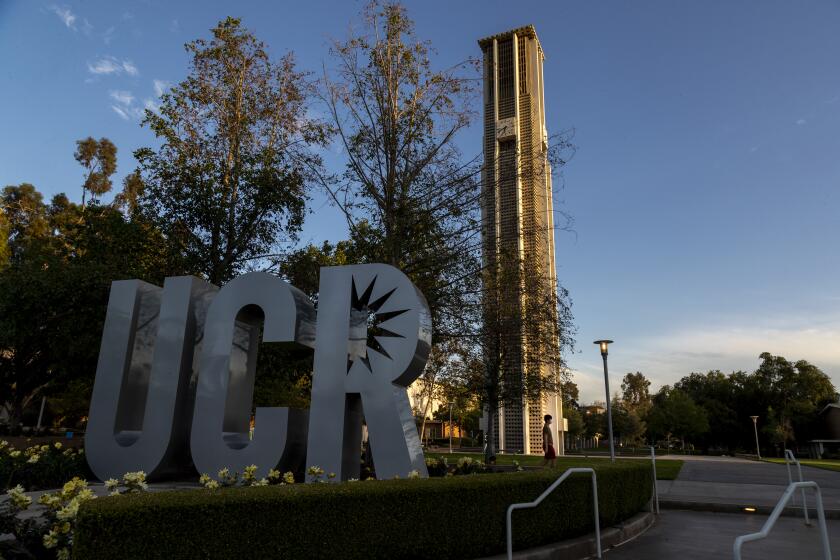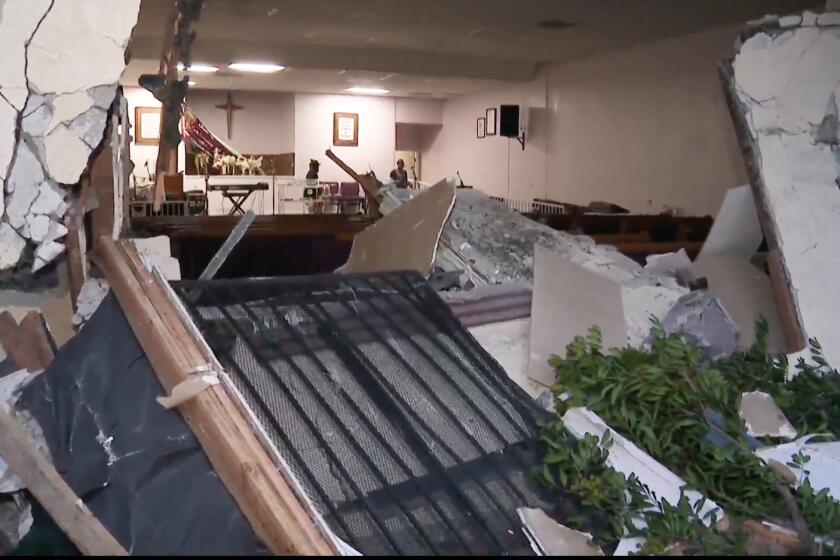Anti-Smog Plan Called ‘Draconian’ : Too Costly Politically and Financially, Local Officials Say
A proposed regional smog plan that could have a dramatic impact on Orange County life styles was attacked as “Draconian” on Wednesday by public officials who said it was too costly both politically and financially.
The Air Quality Management Plan, proposed jointly by the South Coast Air Quality Management District and the Southern California Assn. of Governments, envisions the possibility of mandatory ride-sharing and alternate work schedules. It also includes proposals for a shifting of new jobs from such cities as Fullerton and Irvine to San Bernardino and Riverside in order to reduce vehicle emissions and even raises the prospect of eventual conversion of all cars and trucks to electrical power.
“These are Draconian measures,” Barry Eaton, Fullerton’s director of developmental services, told more than 50 representatives of county agencies and of cities throughout the county at a meeting in Costa Mesa.
Officials Assured a Role
The meeting, scheduled as an informal workshop for local government officials, was initially suggested by Costa Mesa City Manager Allan Roeder, who led the discussion. AQMD and SCAG officials also were on hand, assuring the local officials that they could have a role in modifying the current proposal before its final adoption in November.
But the meeting degenerated quickly from a discussion into speech-making. The anti-smog proposals, Eaton charged, would transfer decision-making from local governments to a “regionwide land-use authority.”
Eaton said Fullerton officials have written to the AQMD and SCAG, attacking the validity of some of the assumptions built into the anti-smog plan.
The letter, dated Aug. 15, specifically challenges the ability of any city to force people to live closer to their jobs, or to meet goals for alternate work schedules or telecommuting--the performance of work in the home by computer.
“Only 25% to 30% of the work force may be technically classified as information workers,” the letter states. “Therefore, a 20% trip reduction from telecommuting . . . is unrealistic.”
Eaton said SCAG’s telecommuting projections would mean that 100% of all people who could work at home using computers and who could work four-day instead of five-day weeks would choose--or could be forced--to do so.
The Fullerton officials’ letter points out that 63% of the workers who live in the city commute to jobs in other places, despite the abundance of local jobs. Requiring industry to hire workers based on their residential proximity “raises some serious constitutional questions,” the letter says.
Not Enough Money Available
Monte Ward, representing the Orange County Transportation Commission, said OCTC studies have shown that there is not nearly enough money available to finance the anti-smog plan’s regional highway and transit construction proposals.
The plan envisions an eight-cent increase in gasoline taxes and other revenue-raising measures such as local sales taxes that would vary from one area to another, Ward said. He added that it may be politically impossible to ask people to pay such taxes to finance a plan that imposes drastic life-style changes.
Arnold I. Sherwood, SCAG’s director of community and economic development, urged local officials to provide input into the air-quality plan. He emphasized that the plan is only a proposal and that people should talk about it.
The U.S. Environmental Protection Agency is awaiting a federal court decision on whether it will have to start imposing sanctions on Southern California soon for not meeting air quality standards. A ruling is expected this fall, officials said.
More to Read
Start your day right
Sign up for Essential California for news, features and recommendations from the L.A. Times and beyond in your inbox six days a week.
You may occasionally receive promotional content from the Los Angeles Times.





